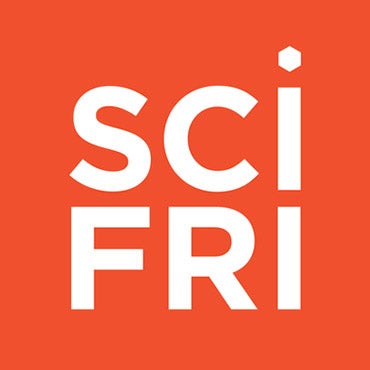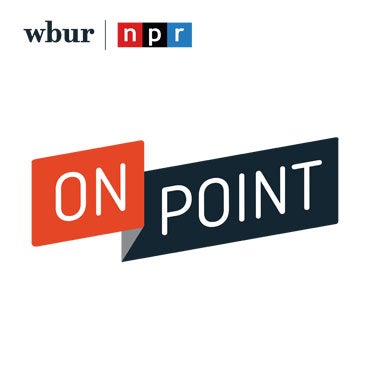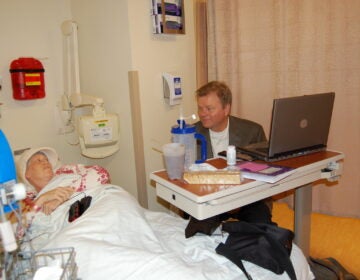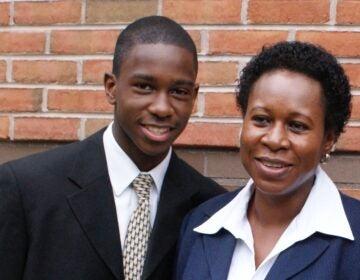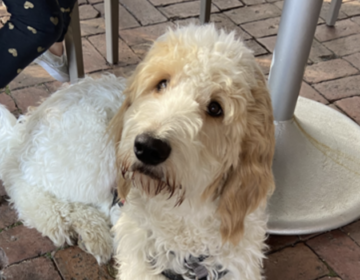Cancer’s second act: Navigating survivorship and the psychological aftermath after treatment for teens and young adults
Cancer survivorship programs and clinics can help patients figure out what long-term recovery might look like and address the physical and mental effects of treatment.
This story is from The Pulse, a weekly health and science podcast. Subscribe on Apple Podcasts, Spotify, or wherever you get your podcasts.
Find our full episode on survival here.
It’s summer break and Elodie Hekimian-Brogan is home in Los Angeles, but she’s keeping busy.
On a Wednesday afternoon, the 22-year-old art major at the University of California Los Angeles finishes for the day as an intern at a local nonprofit and takes a Zoom call outside on her deck.
At school, Elodie explores sculpture, performance, drawing and sketching. But she’s already made a career out of photography, getting paid to shoot images for magazines and projects.
Her most prized photograph, though, wasn’t for a paid job. It was a self-portrait that ended up in the Getty Villa Museum in Los Angeles for six months.
“It was about cancer and it was such an exciting thing to have that photo of all photos, this self-portrait about childhood innocence and the loss of it,” Hekimian-Brogan said.
View this post on Instagram
In the self-portrait, she stands before a large window, backlit by bright light. She’s wearing a white tank top that’s been pulled up to her chest to expose her stomach. A silvery scar starting at the tip of her belly button winds down her lower abdomen and disappears below white drawstring pants.
The photograph, titled “Reconnecting with Innocence,” was taken about two years after doctors removed a cancerous tumor the size of a cantaloupe growing on one of her ovaries.
Hekimian-Brogan was just 16 when she had surgery and chemotherapy. As horrible as that experience was, she said nobody prepared her for how difficult and confusing the survivorship part of cancer would be after treatment was over.

“After you survive, you also have to live,” she said. “It’s this unbelievable battle.”
Becoming a teenage cancer patient
After someone is diagnosed with cancer, they may go through intense treatment involving chemotherapy, surgery, radiation and other procedures.
For some patients, this will be the most traumatic and challenging time of their cancer journey. But other survivors say what comes after treatment can be the hardest part, and they don’t always know where to turn for help, especially if they are young.
An estimated 5,000 to 6,000 adolescents are diagnosed with cancer every year in the United States, according to the American Cancer Society, and roughly 87% of teens reach long-term survival.
Hekimian-Brogan is among them, and the journey so far has been a long one.
At 16 years old, she was playing on the high school varsity water polo team, making new friends and reveling in the excitement of teen drama. She thought she was hitting her peak teenage era.

“I was like, oh, this is when it’s supposed to get fun,” she said laughing.
But things took a dark turn when doctors discovered a tumor that had been slowly growing on one of her ovaries. She’d had some lingering stomach pain for years, but the tumor wasn’t caught until it grew to an 8-inch mass and weighed over two and a half pounds.
Doctors told Hekimian-Brogan and her family that she’d need surgery to remove the tumor, which she famously named Kimberly.
“I threw a party called F*** Kimberly,” she said. “It was three days before my surgery and all my friends came over, we all wore pink. It was like, bring your own ovaries. And it was great.”
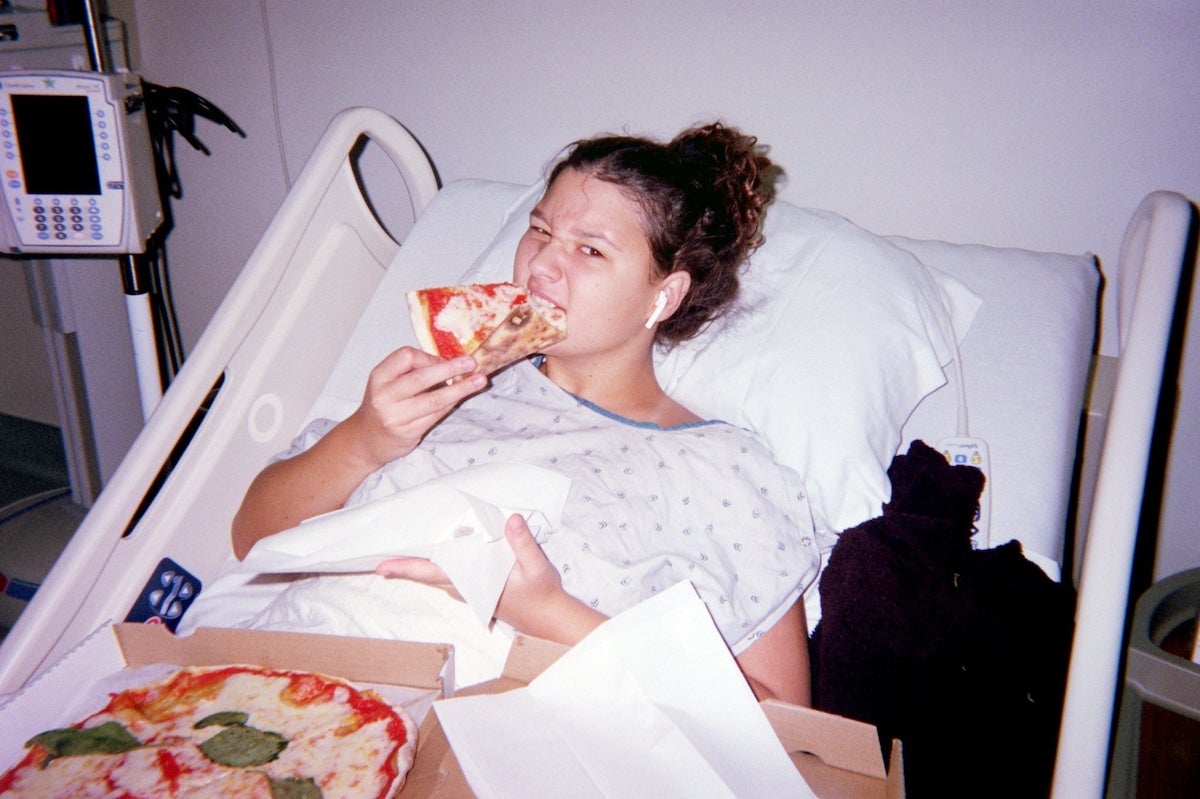
But soon, Hekimian-Brogan bravado and swagger faded and the reality of her situation set in. She started chemotherapy in early 2020. She was the youngest patient on the adult cancer ward at a hospital in Los Angeles.
She lost all her hair, which sometimes fell out in clumps in the shower — a horrific experience. And she had nonstop nausea and vomiting for the three months of chemo infusions.
“I had many breakdowns on the bathroom floor,” she said. “I needed this hyper positivity to get through the day.”
Then the COVID-19 pandemic hit and Hekimian-Brogan became isolated from her friends. She also started feeling really lonely in her experience as a teenage cancer patient, sitting still for hours to get infusions, almost always surrounded by older men and women.
It was nothing like in the books she’d read or movies she’d seen.
“‘Fault in Our Stars’ was one of my favorite movies growing up. And then I’m sitting here and I’m like, where’s my cancer boyfriend?” she said with sarcastic incredulity. “And there was nothing of the sorts. There was no cancer boyfriend, no cancer girlfriend. There was literally just other cancer in the room.”
Subscribe to The Pulse
Hekimian-Brogan turned to social media to find empathy and understanding, and feel less alone. She ran a TikTok account called Hot Cancer Survivor with about 60,000 followers and wrote about her experiences on a blog called Sick Kid Chronicles.
“I was producing all of this content about being sick, because there was no one doing it,” she said.
Eventually, she finished treatment. Doctors were confident that they had vanquished all traces of Kimberly for good, and Hekimian-Brogan had this vision for what life would be like from then on.
She’d finish chemo in May, celebrate her birthday in June, work out all summer to get ready for water polo season and then go back to school.
“And none of those things happened because, oh my God, the life that I thought I was going to walk back into, it’s almost as if it did not exist anymore,” she said.
Cancer’s second act: Survivorship
Hekimian-Brogan felt like an imposter in her own body, now battle-worn and scarred. She felt like she could no longer really relate to the people who were once closest to her.
“You go back into this world and everyone’s like, ‘oh my God, you’re finally alive again.’ People are so happy,” she said. “And then you’re like, uh, I feel bad, I don’t know who I am, I don’t know who you are, you seem different, too. My parents felt different, I felt different, my dogs look different, like everything was different. And then no one talks about it.”
Hekimian-Brogan was also dealing with post-traumatic stress from cancer treatment, which was triggered by certain smells, foods and memories.
“On homecoming, this girl threw up in the back of my car at an In-And-Out drive thru and I had a full-blown panic attack because it reminded me of chemo,” she said. “Even when I smell hand sanitizer, I still am like, ugh.”
Nobody prepared her for just how difficult the survivorship part of cancer would be, especially in those early years, she said. But over time, her feelings and perspective on what she went through changed and evolved.
Hekimian-Brogan recently celebrated her five-year-anniversary of completing cancer treatment, a big milestone in the survivorship world as the risk of recurrence becomes much smaller. She can’t even entertain the idea that she’d ever have to go through cancer treatment again.
“I’m just going to continue living as if cancer will never come back, because that is what I prescribe to,” she said.

She sometimes uses her photography as a creative outlet to explore and document parts of her cancer journey, but nowadays, it takes up less room in her thoughts.
When Hekimian-Brogan meets new people, she no longer leads with the fact that she had cancer. Instead, she likes to save it for maximum shock value.
“There will be people I’ve been friends with for a year and I’ll be like, ‘Oh yeah, when I had cancer,’ and they’re like, ‘What?’” she said with a mischievous smile.
She’s made most of her social media accounts about cancer private and for the most part, stopped posting new content. But she still makes videos for a group of researchers based at Northwestern University, who’ve been exploring ways to use social media to help support teenage cancer patients during treatment and in survivorship after.
It’s become a way to stay involved in cancer research and awareness efforts, Hekimian-Brogan said, without having to expose herself to painful memories and her own medical trauma on a daily basis.
Overall, Hekimian-Brogan said her identity has become less intertwined with cancer. And she feels good about it.
“I like to not think about cancer now. It’s this lovely privilege that I have so earned to not think about it,” she said. “It can be in my life and it doesn’t have to be negative, which is a really nice stage that I’m at.”
Physical and mental support in cancer survivorship programs
It’s a good stage to be in, said researcher and pediatric psychologist Lisa Schwartz, who typically sees older teenagers at the Childhood Cancer Survivorship Program at Children’s Hospital of Philadelphia.
Young survivors can sometimes fall into two extreme camps of how they process their past cancer treatment, Schwartz said. They can be tempted to forget it all and pretend like it didn’t happen, or they become consumed with what they went through and the potential consequences.
“You want them to feel some level of vulnerability to be motivated to engage in follow-up care and health-promoting behaviors that can mitigate their risk of cancer late effects in the future,” she said. “But at the same time, there is something psychologically protective of feeling like, ‘That’s in the past, I don’t want to let that drag me down.’”
Most major cancer hospitals have survivorship programs and clinics to help patients figure out what long-term recovery might look like, including how to deal with potential long-term physical effects like fertility issues, risk for secondary cancers, disabilities and other health complications.
The programs can also help survivors navigate the psychological aftermath, including PTSD, social anxiety, depression and survivor’s guilt.
But research shows that few childhood survivors are connected to these clinics.
“By the time they reach adulthood, the statistics vary, but it’s less than half,” Schwartz said. “And in fact, typically much lower than that are getting the annual follow-up care that’s recommended for long-term childhood cancer survivors.”
It’s a missed opportunity to ensure that young people are getting the best follow-up care possible for living a long and healthy life, Schwartz said. She and a team of researchers have been developing interventions designed to re-engage young people in survivorship programs and care.
Some of them prioritize methods of communication, like sending more reminders through text messages. Other strategies focus on reducing barriers like transportation issues, insurance costs or an overall lack of understanding about the lifetime risks of cancer.
These clinics can be a lifeline even years after finishing cancer treatment, said Elle Crofton, who has what she calls a survivorship doctor at Penn Medicine in Philadelphia.
“She just follows me now, forever. She’s stuck with me,” she said and laughed.
Living in long-term cancer survivorship and planning for the future
Crofton sips an iced coffee while sitting on a bench in Norris Square in Philadelphia, a short walk from where she lives. Kids on summer break are playing on the jungle gym while other people are walking their dogs and riding their bikes through the small park.
“I’ve never seen it so busy,” she remarks.
Crofton is 37 now and a teacher in the city. When she was 25, her career plans were nearly derailed after she was diagnosed with a rare form of blood cancer.

“Myelodysplastic syndrome with chromosome deletion 5Q,” she says with an eye roll at the name. “At 25 years old, you kind of feel like an invincible human. Nothing can touch you. So even when I was diagnosed, it didn’t seem that real.”
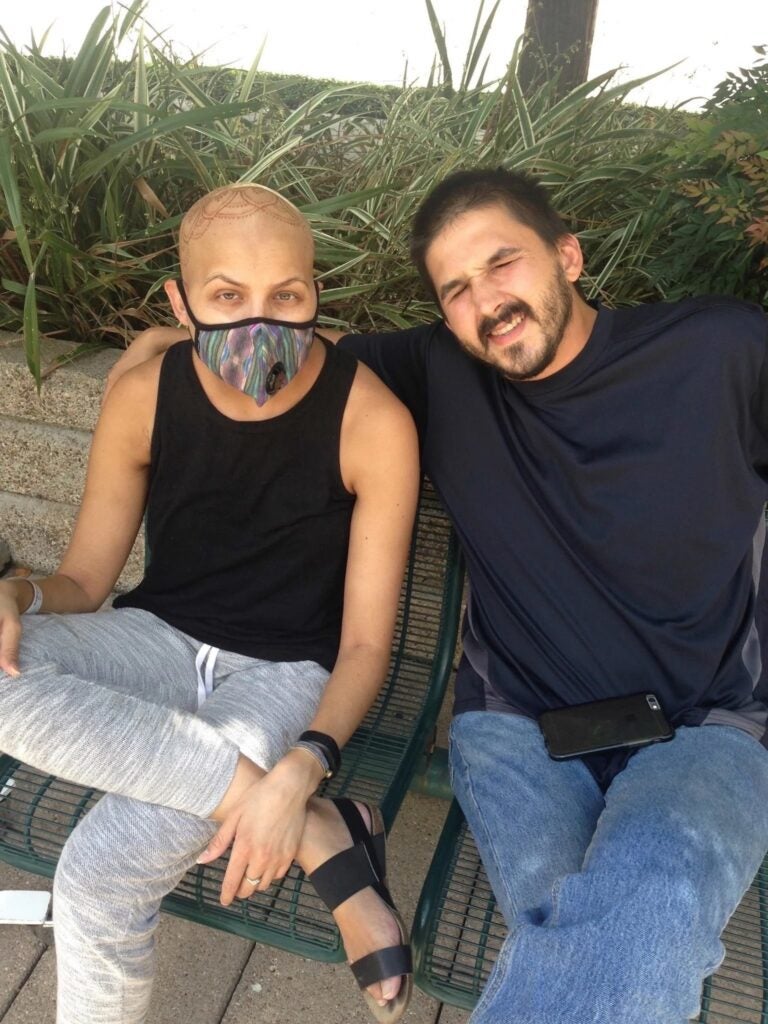
It was a shock. She moved from Philly back to Houston for a while to be closer to her parents and family during treatment.
Even after chemotherapy and a successful bone marrow transplant, she was told that her immune system took a big hit and her life was going to look different moving forward.
“I was told I could never teach again, I needed to figure out what else to do with my life, you know, after surviving,” she said. “That was really hard.”
That was about a decade ago, and Crofton was determined to prove everyone wrong. She did return to teaching and now works in Philly’s public school system. But it wasn’t easy.
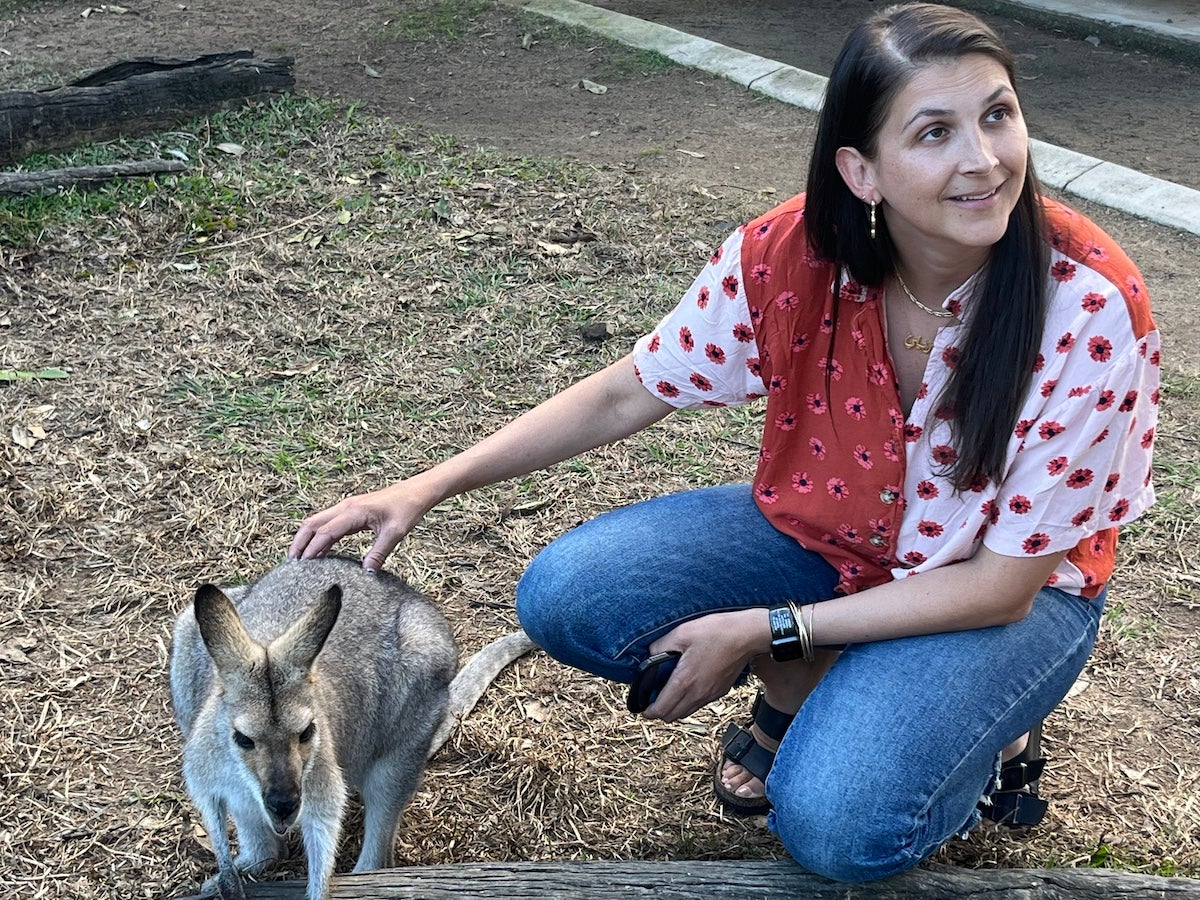
In those early years of survivorship, she said, the pain and bitterness over what happened was still fresh. The physical reminders of cancer treatment lingered as her hair slowly grew back and her energy levels made a sluggish recovery.
“It takes quite a long time to kind of feel like a quote-on-quote normally functioning human again,” she said.
And then, with more time, she started to figure out what role cancer played in her past and what role it will continue to play in her life now.
“It’s not something that is me, it’s something that happened,” she said. “It’s something that will always be a part of me, but it’s not my identity.”
Crofton still has questions that linger in her head, like will she ever have to deal with graft-versus-host disease, a complication for some people after bone marrow transplants? Or did cancer treatment affect her ability to one day have children?
Or will there be other health issues? Recently, she was diagnosed with high blood pressure.
“I went to my general practitioner and they’re like, ‘Well, you’re fit, you’re healthy, you’re young, we don’t really understand why,’” she said. “And then I went to my survivorship doctor and she was like, ‘Oh, yeah, that’s just kind of a long-term effect.’”
Crofton handles these situations with a sense of calmness and maturity as cancer survivorship has become a quieter, more comfortable place to be in.
In her spare time, she does advocacy work for the National Marrow Donor Program and talks about her support for laws requiring companies to guarantee paid time off for workers who donate bone marrow or stem cells.
Crofton recently met an older woman who had cancer and a transplant decades ago, when the procedures were still considered experimental. And now, she said that woman is just thriving. It gives her hope for her own future.
“Knowing that I am going to be old at some point,” she said. “That’s always been in the back of my mind, like how long am I going to be here for? Is this cutting things short for me? There’s lots and lots of things that go on in my head about what this could have changed for my future. But seeing her and seeing a few other people I know, it’s just … keep living life.”
WHYY is your source for fact-based, in-depth journalism and information. As a nonprofit organization, we rely on financial support from readers like you. Please give today.
